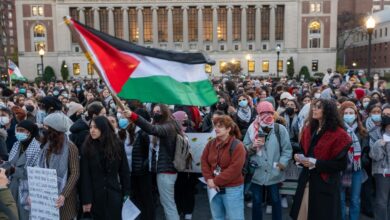The Fabricated Israeli Narratives of October 7

The Fabricated Israeli Narratives of October 7: Who Adopts?
The conflict between Israeli occupation and Palestine has always been accompanied by a complex interplay of narratives and counter-narratives, each side vying for international support and sympathy. On October 7, a series of events and subsequent narratives emerged that drew significant global attention. Notably, these narratives, later revealed to be fabricated, were not only adopted by Israeli officials but also endorsed by prominent international figures, including the US President. This essay critically examines the origins, dissemination, and implications of these fabricated narratives.
The Genesis of the Fabricated Narratives
The events of October 7, according to initial reports, were characterized by severe violence and atrocities allegedly committed by Palestinian against Israeli civilians. A volunteer from ZAKA, an Israeli emergency organization, was instrumental in crafting and disseminating these stories. ZAKA, known for its humanitarian and emergency services. However, in this instance, one of its volunteers manipulated this trust to fabricate stories aimed at evoking emotional and financial responses from the international community.
Adoption by Global Leaders
One of the most significant aspects of this incident was the rapid adoption and propagation of these fabricated narratives by international leaders. The US President, along with other influential political figures, publicly condemned the alleged atrocities and expressed unwavering support for Israel based on these narratives. This swift endorsement underscores the extent to which these fabricated stories were convincing and aligned with the pre-existing biases and political inclinations of these leaders.
Media Propagation: The Role of The New York Times
The New York Times, one of the most respected news organizations globally, played a crucial role in disseminating these narratives. The newspaper reported the stories with an apparent lack of thorough verification, thereby amplifying their reach and impact. The involvement of such a reputable media outlet not only lent credibility to the fabricated accounts but also facilitated their acceptance by a broader audience, both domestically and internationally.
Motivations Behind the Fabrication
The motivations behind these fabrications were multifaceted. Primarily, the goal was to galvanize international support and financial aid for Israel. The harrowing details of the fabricated atrocities were designed to evoke a strong emotional response, compelling individuals and governments worldwide to provide financial and political support. Additionally, these narratives aimed to justify potential retaliatory actions by Israel, framing them as necessary responses to heinous acts of violence.
Implications and Consequences
The revelation that these narratives were fabricated has profound implications. Firstly, it undermines the credibility of Israel and its advocates, casting doubt on future claims and reports. This erosion of trust complicates the already complex Israeli-Palestinian conflict, making it more challenging to navigate diplomatic and humanitarian efforts.
Secondly, the endorsement of these narratives by global leaders, particularly the US President, exposes the susceptibility of even the most powerful and supposedly informed figures to misinformation. This calls for a more critical and cautious approach to international diplomacy and information verification.
Lastly, the role of the media, especially reputable outlets like The New York Times, comes under scrutiny. This incident highlights the need for rigorous fact-checking and responsible journalism, particularly in conflict zones where the stakes are extraordinarily high.
Moving Forward
In light of these fabrications, it is essential for all parties involved to prioritize transparency and accuracy in reporting. International leaders must exercise greater discernment and seek independent verification before endorsing claims that could have far-reaching consequences. Media organizations need to strengthen their fact-checking mechanisms and remain vigilant against the dissemination of misinformation.
The Israeli war against Palestinians, marked by deep-seated grievances and complex historical contexts, demands a commitment to truth and integrity from all stakeholders. Only through honest and factual discourse can there be any hope of a sustainable and just resolution.
Conclusion
The fabricated Israeli narratives of October 7 and their subsequent adoption by international leaders highlight the critical role of narrative in shaping geopolitical realities. This incident serves as a stark reminder of the power of information and the necessity of responsible journalism and leadership. Moving forward, a commitment to truth and integrity is paramount in addressing the multifaceted challenges of the Israeli-Palestinian conflict and ensuring that future discourse is grounded in reality rather than manipulation.
Discover more from Gaza Never
Subscribe to get the latest posts sent to your email.





